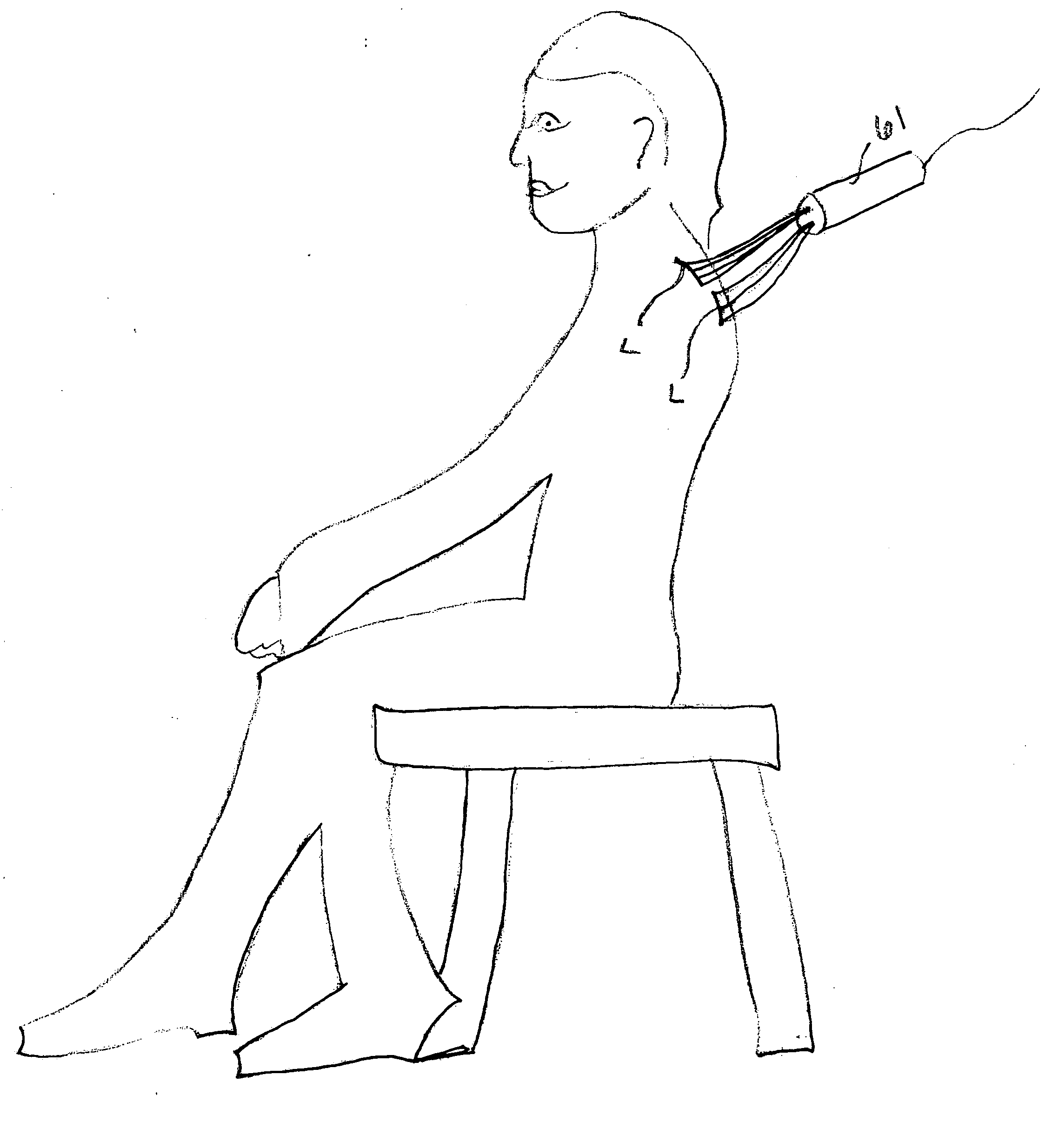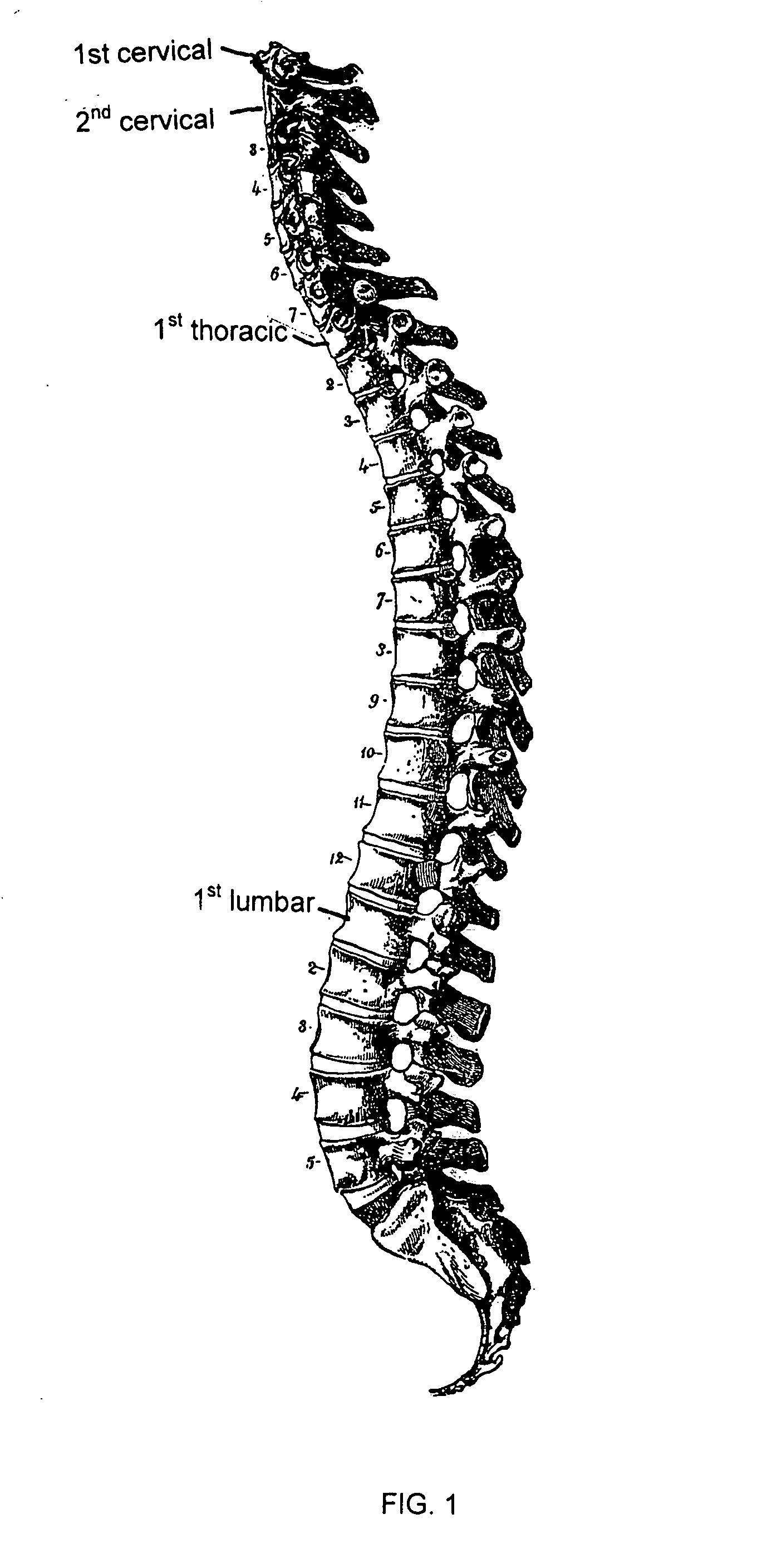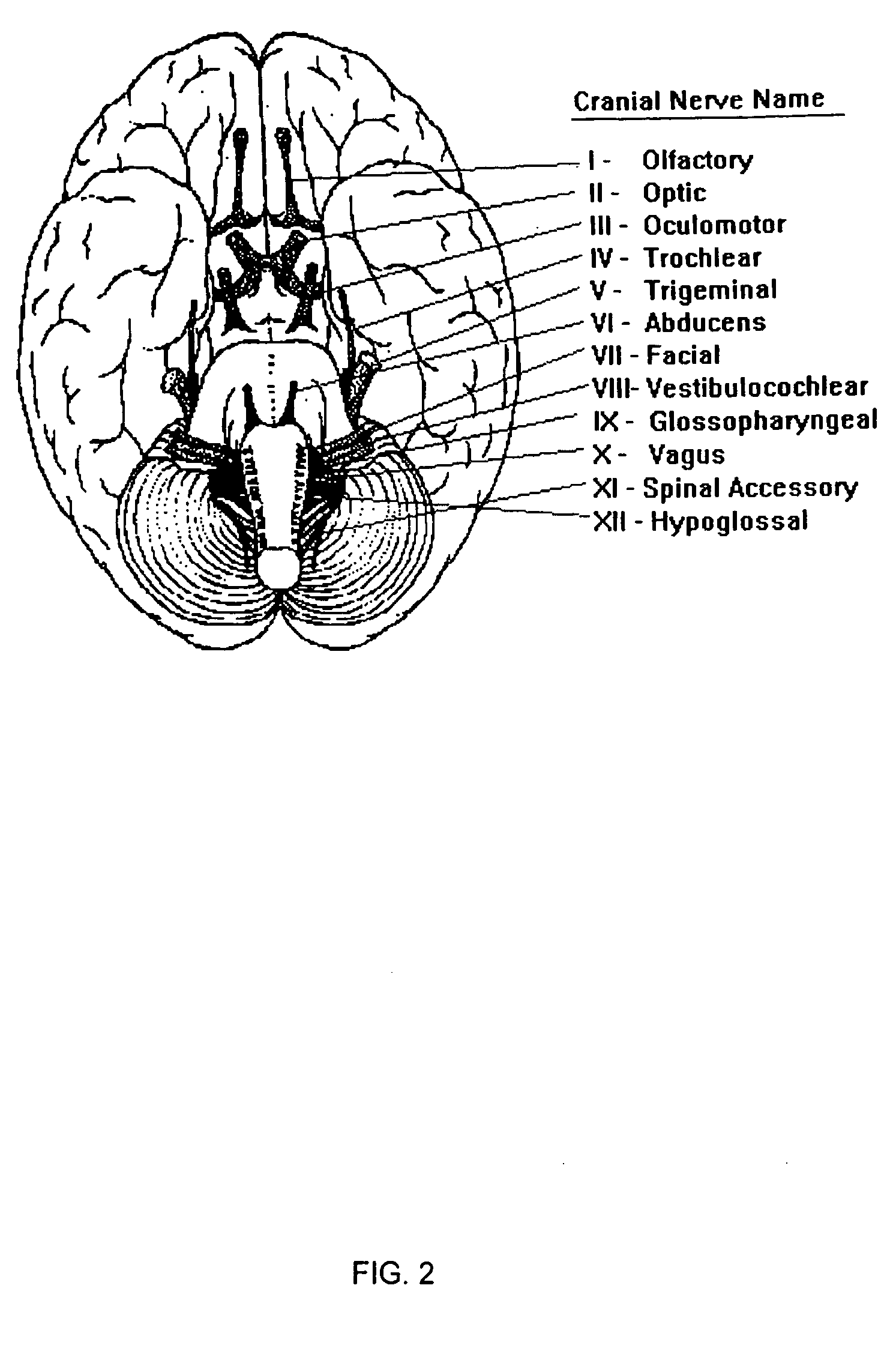Method for treating hearing loss
a laser device and hearing technology, applied in the field of hearing loss treatment, can solve the problems of sensory hearing loss, damage to inner ear hair cells, and damage to neural pathways to the auditory cortex, and achieve the effect of improving hearing loss
- Summary
- Abstract
- Description
- Claims
- Application Information
AI Technical Summary
Benefits of technology
Problems solved by technology
Method used
Image
Examples
Embodiment Construction
[0016] The present invention is a method of treating hearing loss in a human patient. A principal component of this treatment is to apply laser energy to the patient's spine, preferably a selection of vertebrae including certain cervical and dorsal (thoracic) vertebrae. Optionally, laser energy may be applied to the patient's cranial nerves and temporomandibular joints. Laser energy may also be applied to one or both of the patient's ears.
[0017] In the preferred embodiment, the laser energy is applied to the patient's cervical and dorsal vertebrae C5 through T1 for about 30 seconds; to the patient's cervical vertebrae C1 through C4 for about thirty seconds; to the patient's cranial nerves C-I through C-XII for about 30 seconds; to each of the patient's temporomandibular joints for a total of about three minutes; and to each of the patient's ears, for about two minutes per ear. In the preferred embodiment, the laser energy portions are applied in the series set forth in the previous...
PUM
 Login to View More
Login to View More Abstract
Description
Claims
Application Information
 Login to View More
Login to View More - R&D
- Intellectual Property
- Life Sciences
- Materials
- Tech Scout
- Unparalleled Data Quality
- Higher Quality Content
- 60% Fewer Hallucinations
Browse by: Latest US Patents, China's latest patents, Technical Efficacy Thesaurus, Application Domain, Technology Topic, Popular Technical Reports.
© 2025 PatSnap. All rights reserved.Legal|Privacy policy|Modern Slavery Act Transparency Statement|Sitemap|About US| Contact US: help@patsnap.com



